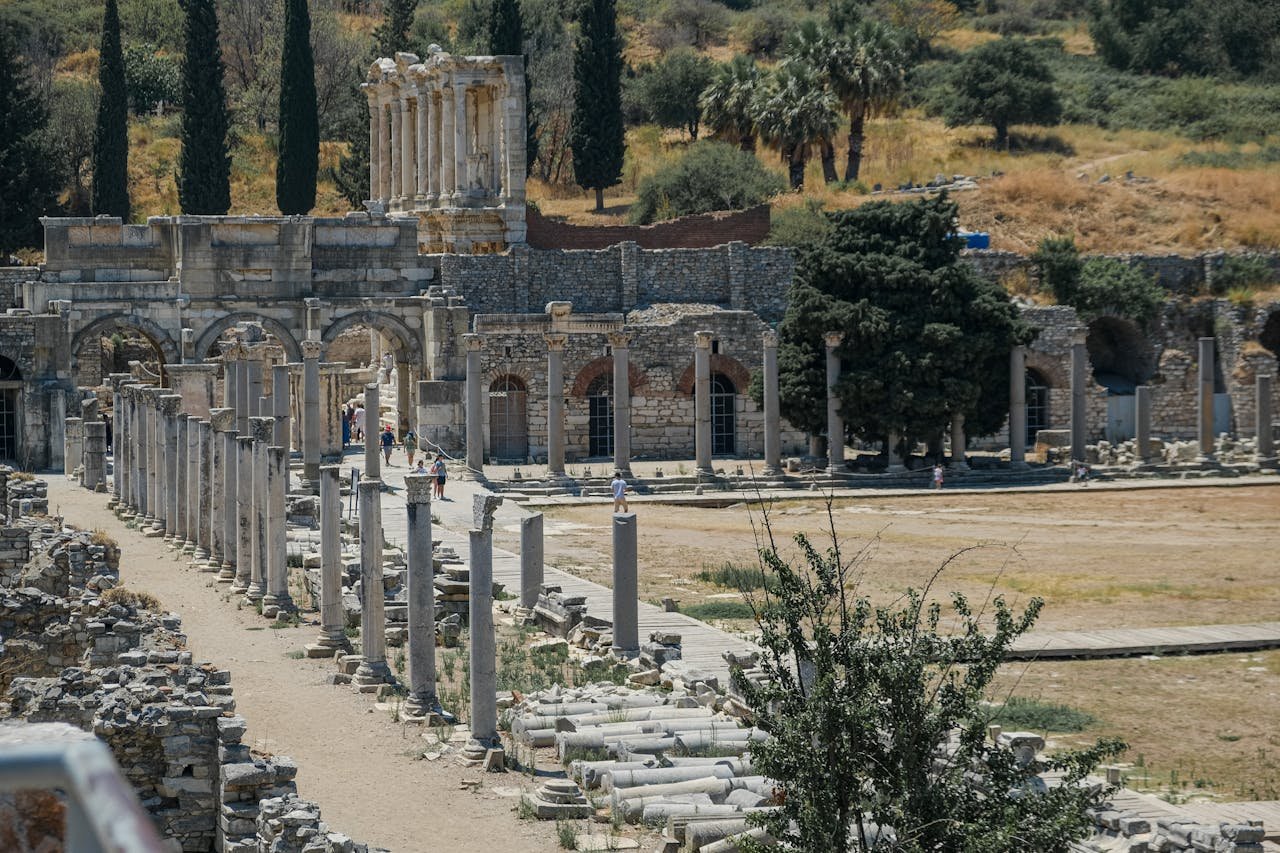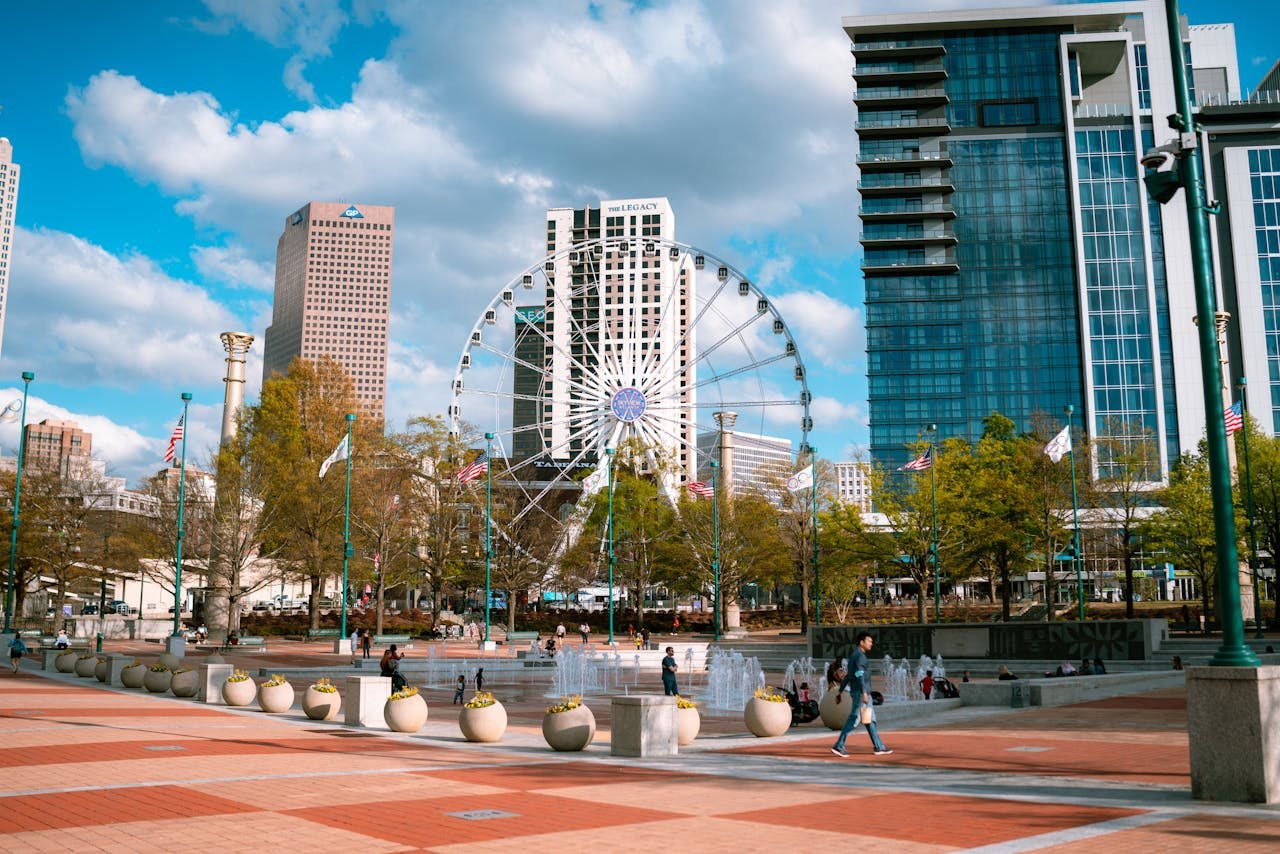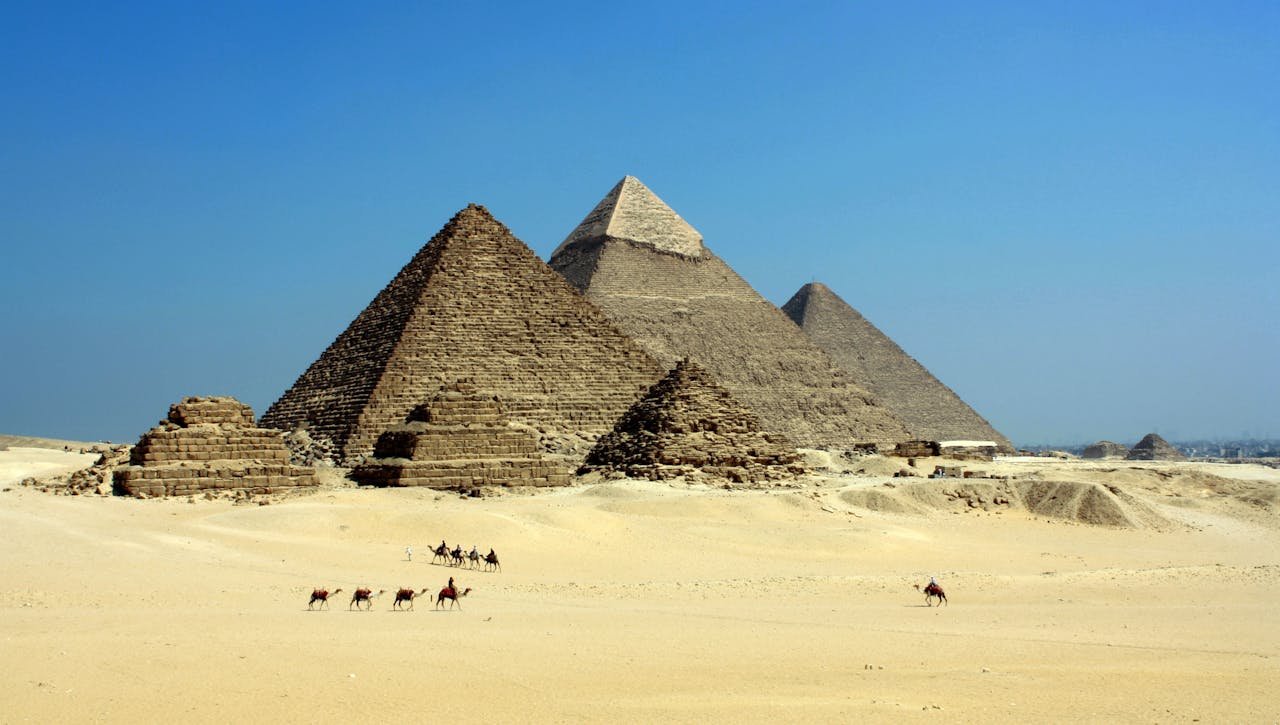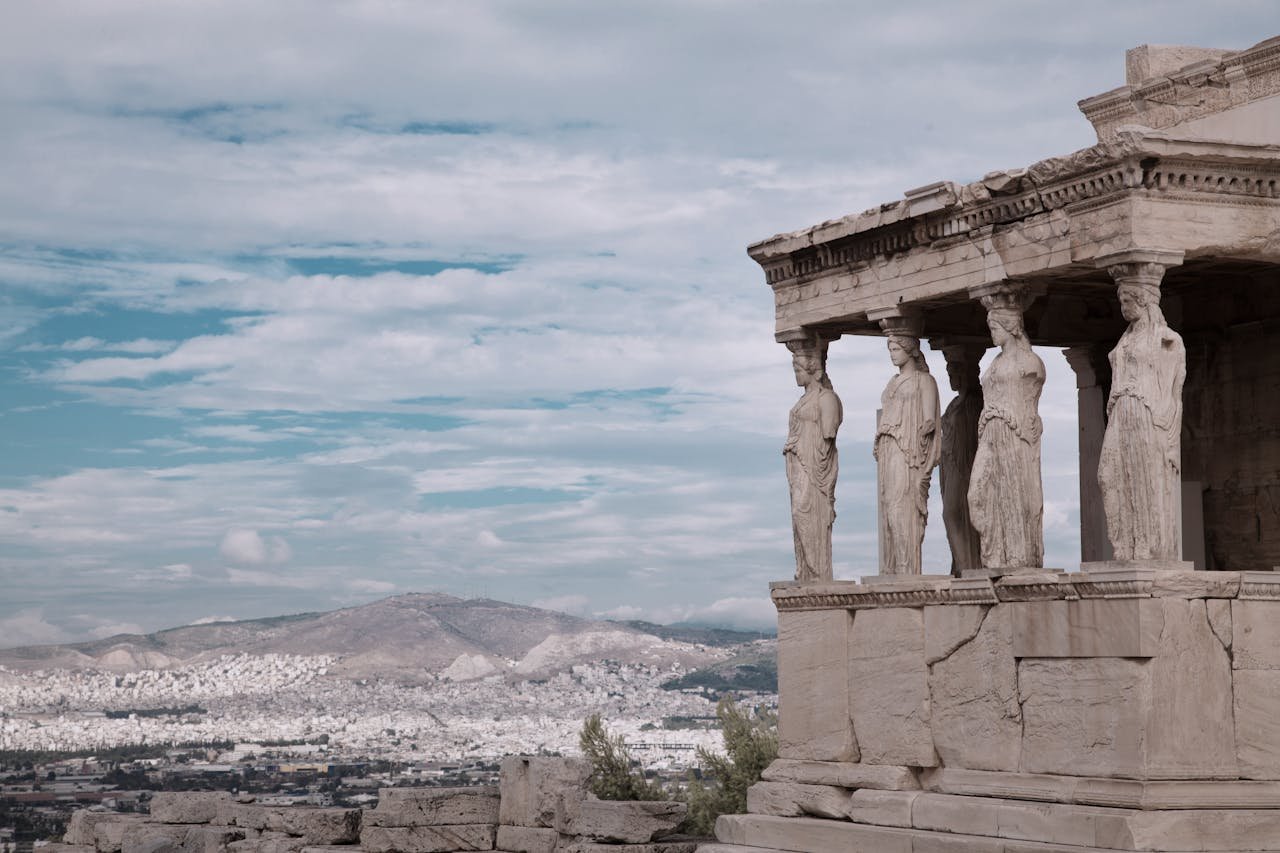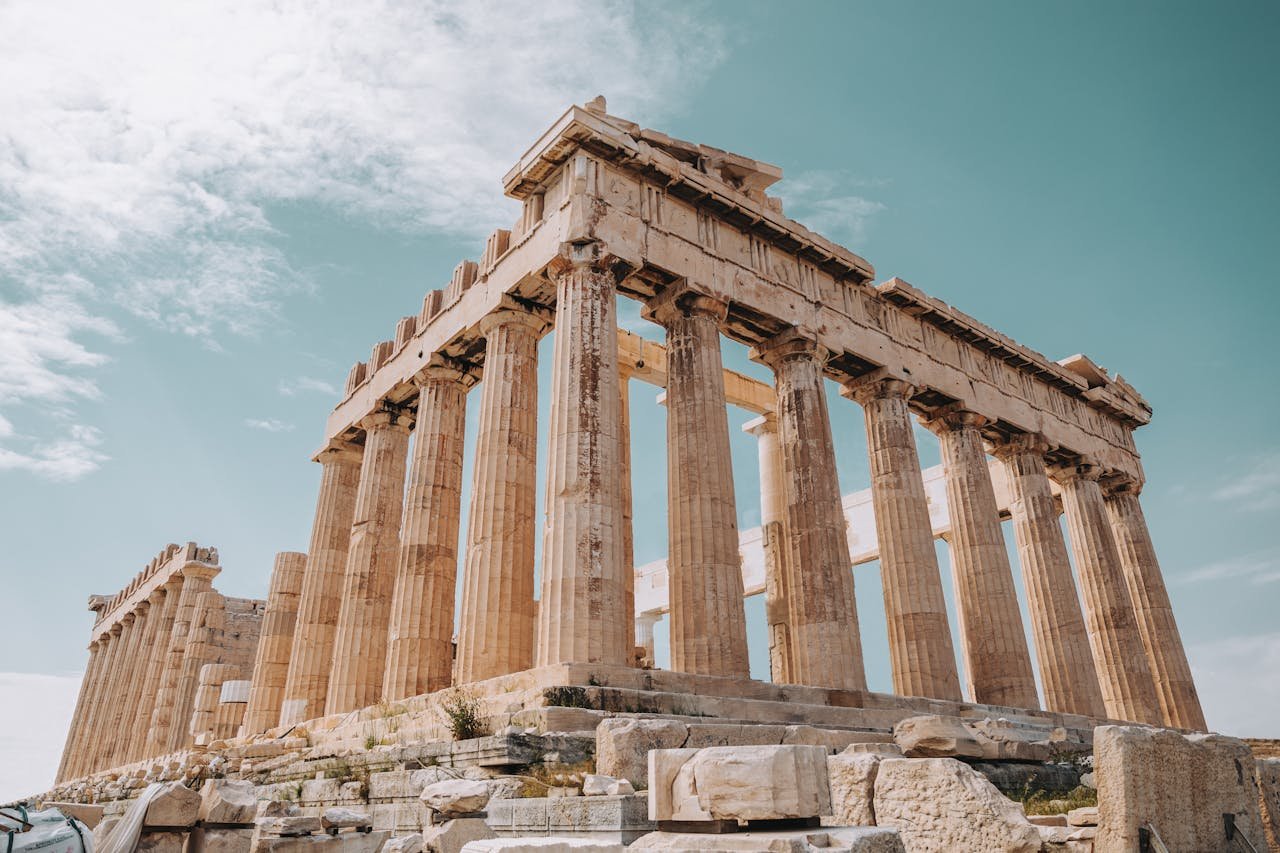Explore the ancient Rome timeline and learn about the significant milestones that shaped this ancient civilization. Visit our blog for more details.
Exploring the Ancient Rome Timeline
Key Highlights
- From Humble Beginnings: Ancient Rome, initially a small Italian settlement, rose to become a dominant force shaping Western civilization.
- Republic to Empire: Witness the Roman Republic’s transition to the Roman Empire, marked by political intrigue, expansion, and iconic figures like Julius Caesar.
- Military Might and Engineering: Explore Roman military strategies, advancements in technology, and architectural wonders that still marvel us today.
- Cultural Tapestry: Discover the vibrant daily life in Ancient Rome, its social structures, religious practices, and lasting contributions to art, literature, and law.
- Legacy and Rediscovery: Uncover the reasons behind Rome’s decline and understand its enduring impact on modern governance, language, and culture.
Introduction
The Roman Empire is a name that many remember. It brings to mind gladiators, emperors, and a civilization that changed Western society. The history of Ancient Rome is an interesting story. It started as a small city of Rome by the Tiber River and grew into a huge empire over many years. This exploration will take you through important events and people in Ancient Rome, including the long list of Roman emperors who led this civilization. You will learn about its successes, challenges, and lasting impact.
The Founding of Rome
The traditional date for the founding of Rome is 753 BCE. This date is well-known among the Romans. However, evidence from archaeology shows that people lived in the area long before this date. Both history and myth are important parts of how Rome began.
We do not know all the details because they are lost in time. Yet, Rome’s location was key. It was a natural spot for trade and cultural sharing. This mix of different cultures helped shape the early Roman state.
Myth vs. Reality: The Romulus and Remus Story
The most famous story about how Rome began is about the twins Romulus and Remus. These twins were left alone as babies on the Tiber River. A she-wolf found and fed them. This she-wolf symbolizes Rome.
They grew up with a shepherd. When they became adults, they wanted to start their own city. They had a fight about where to build it. Sadly, Romulus ended up killing Remus. He became the only founder of the city of Rome on Palatine Hill.
This story shows how much Romans cared about family, fate, and the harsh side of power. Even if it isn’t completely true, the myth of Romulus and Remus still fascinates us today. The image of the she-wolf feeding the twins remains a key part of Rome’s history.
Archaeological Evidence of Rome’s Earliest Days
Excavations on Palatine Hill have found signs of settlements that are from the 10th century BCE. This is much earlier than the usual date for the founding of Rome. These discoveries show that development happened slowly and not in a sudden or mythical way.
The early communities likely started as farming groups. Over time, these groups expanded and became more complex. There is evidence of influence from nearby Etruscan and Greek cultures, which helped shape the rich mix in Roman history.
The change from these early settlements to the organized society of the early Republic is a time of ongoing discovery for archaeologists. Current research is still improving what we know about this important time in Roman history.
Timeline for Roman Civilization
The timeline of Ancient Rome civilization is a vast and complex one, spanning over a thousand years. Here is a brief overview of the key events and periods in Roman history:
- 753 BC: Traditional date for the founding of Rome by Romulus
- 509 BC: The Roman Republic is established after the overthrow of the Etruscan monarchy
- 264-146 BC: The Punic Wars against Carthage establish Rome as a dominant power in the Mediterranean
- 73-71 BC: The slave rebellion led by Spartacus
- 44 BC: Julius Caesar is assassinated, leading to the end of the Roman Republic
- 27 BC – 14 AD: Reign of Emperor Augustus, marking the beginning of the Roman Empire
- 79 AD: The eruption of Mount Vesuvius destroys Pompeii and Herculaneum
- 117 AD: Rome reaches its greatest territorial extent under Emperor Trajan
- 284 AD: Diocletian divides the Roman Empire into East and West
- 476 AD: The fall of the Western Roman Empire
The Roman Kingdom
Tradition says that Rome was ruled by seven kings, starting with Romulus in 753 BCE, until the Republic began in 509 BCE. These kings, real and legendary, helped shape early Rome’s politics and society.
Each king’s time was filled with military victories, social changes, and big construction projects. Their actions helped Rome grow and gain power. The impact of these rulers set the stage for the Republic to form.
The Seven Legendary Kings of Rome
Each king played a part in building the Roman Kingdom, from the warrior-king Romulus to the cruel Lucius Tarquinius Superbus. Tullus Hostilius was known for his strong military skills. He expanded Rome’s land and solidified its power over nearby regions.
In contrast, Numa Pompilius worked on changes in religion and law. He set up many key religious ideas that lasted into the Republic. The time of Servius Tullius is often remembered for his social reforms. He created a system based on counting people that changed Rome’s political and military setup.
The last king, Tarquinius Superbus, was known for his harsh rule. His actions eventually caused the end of the monarchy and the start of the Republic. This time, even if many stories are told, was important in shaping Rome’s future as a republic.
Buy Amazon- The Historians of Ancient Rome
Buy Amazon- The History of Rome: Volume I
Rome’s Social and Political Structures in the Regal Period
Roman society during the Kingdom had a clear social order. At the top was the king. Below him were the patricians, who were rich landowners with a lot of power. The plebeians, who were common people, made up most of the population, but they had very few political rights.
The Roman Senate was a group of older men who advised the king. This council was important in Roman politics. While its power changed with different leaders, it stayed a key part of Roman government throughout its history.
The Regal Period was significant. It saw the rise of Rome’s political, social, and religious systems. This period laid the groundwork for the later Republic. The fight for power between the elite and the common people would influence Rome’s inner workings for a long time.
The Rise of the Roman Republic
In 509 BCE, the people of Rome rose against the harsh rule of Tarquinius Superbus. They ended the monarchy and started the Roman Republic. This was an important change in Roman history. It moved the power from kings to elected leaders.
At first, the Republic was weak, but it set the stage for Rome to become a strong power. It went through tough times inside and grew outside as well. This shows how strong its system was.
The Establishment of the Republic
The Roman Republic began because people wanted a fairer way to share power. Instead of having a king, power was given to elected leaders called magistrates. The most powerful leaders were the two consuls, who served for one year.
The Roman Senate, which was important since the time of kings, still played a big role in advising the government. Its power grew over time and it started to strongly influence Roman decisions. During the early Republic, there were many conflicts at home and threats from outside, which tested this new government. However, it was also during this time that Rome’s borders expanded beyond the Mediterranean region for the first time, thanks to Julius Caesar’s conquest of Celtic Gaul in 51 BC. This marked a significant change in the history of Republican Rome.
Even with these problems, the Republic survived. This showed the strength and flexibility of its system of government. These traits helped Rome grow and become powerful in the future.
The Expansion of Rome in Italy
Initially, Rome worked on strengthening its hold in central Italy. It faced challenges from nearby Latin tribes and Etruscan cities. By using military strength and smart partnerships, Rome expanded its influence.
As Rome grew stronger, it shifted its focus south. It eventually took control of the Greek cities in Southern Italy. This growth exposed Rome to new cultures and ideas. It also brought new military challenges, helping Rome improve its skills in both warfare and politics.
By the 3rd century BCE, Rome ruled most of the Italian peninsula. This stretched from northern Italy to the southern tip. This time of growth changed Rome from a local power into a major force in the Italian peninsula.
Major Conflicts: The Punic Wars
The Punic Wars were three major fights against Carthage, a strong empire in North Africa. These wars changed the Roman Republic and lasted over a hundred years. They tested Rome’s military strength and helped it become the leading power in the Western Mediterranean.
- First Punic War (264-241 BCE): This war was all about naval battles for Sicily. Rome worked hard to build a strong navy and won, taking its first overseas province.
- Second Punic War (218-201 BCE): This war is famous for Hannibal’s brave crossing of the Alps and his wins against Roman troops. Rome came very close to defeat but fought back, beat Hannibal, and won.
- Third Punic War (149-146 BCE): In this last war, Carthage was completely destroyed. This marked Rome’s stronghold on the Western Mediterranean and started a new phase of Roman growth.
Winning the Punic Wars greatly changed the Republic. It expanded its land and power. It also led to major social, economic, and political changes that shaped Rome’s future.
Dress Code Ancient Rome
The dress code of Ancient Rome civilization was a reflection of social status, wealth, and occupation. Roman clothing varied based on gender, age, and occasion. Men typically wore a tunic that was knee-length and belted at the waist. The toga, a draped garment made of wool, was reserved for formal events and high-ranking individuals. Women wore a stola, a long tunic-like garment, often with a palla or shawl draped over it.
Footwear included sandals for daily wear and closed shoes like calcei for formal occasions. Accessories such as jewelry, belts, and brooches were used to adorn garments and signify wealth. Different colors and fabrics symbolized social standing; purple was reserved for emperors due to its rarity.
The military attire of Ancient Rome consisted of armor, helmets, shields, and sandals for soldiers. Senators were identified by their distinctive tunics featuring broad purple stripes called clavi.
Overall, clothing in Ancient Rome was not just about covering the body but also conveyed social hierarchy and cultural values. The intricate details of Roman attire provide insights into the lifestyle and customs of this ancient civilization.
Read more- Ancient Greek Civilization Timeline and History
The Roman Republic’s Political Evolution
As Rome grew, its political system changed a lot. There was a big fight between the patricians, who were the rich elite, and the plebeians, who were the everyday people. This fight for political rights was called the Conflict of the Orders. It became very important in the Roman Republic.
Through ongoing effort and various reforms, the plebeians gained more rights. They were allowed to hold important offices and create laws. This changed Roman society and helped ensure a fairer sharing of power in the Republic.
The Struggle of the Orders
The social structure of the Roman Republic was clearly divided. The patricians had most of the power in politics and religion. On the other hand, the plebeians were the majority but had very few rights.
Because of this difference, the Conflict of the Orders began. This was a fight for more rights and representation for the plebeians. They protested in different ways. One way was to stop working or serving in the military. This put pressure on the patricians to listen to their needs.
Eventually, the plebeians gained the right to choose their own leaders, called tribunes. These tribunes could reject Senate decisions that they thought were bad for the plebeians. This struggle helped create a fairer distribution of power and expanded Roman citizenship. It helped build a stronger foundation for the Republic.
Law and Citizenship in the Republic
Roman law was very important for the Republic and changed a lot during this time. The Twelve Tables were written on bronze tablets and shown to the public. They organized current laws, which helped people understand them better and created a legal system for Roman citizens.
Roman citizenship started as a right for people living in Rome only. Over time, it grew to include people from conquered areas in Italy. This approach built loyalty and helped connect different groups, greatly aiding Rome’s success.
By balancing clear laws with the wider reach of citizenship, Rome maintained order and helped its growth. This became a key feature of Rome’s strong empire.
Innovations in Military Strategy and Technology
The Roman army was known for its discipline and effectiveness. It changed a lot during the Republic. The army moved from being made up of citizen fighters to a professional force. This change helped them adapt their tactics and organization for a larger empire.
The Romans were very good at siege warfare. They created new techniques and powerful siege engines. These engines could break through strong defenses. Their skill in adapting to different lands and opponents helped them win in many battles.
The legendary legions and impressive engineering of the Roman army continue to interest military historians. Their organization, training, and tactical flexibility were key to their success and to making Rome powerful.
The Transition from Republic to Empire
The Roman Republic had many successes. However, it faced problems like internal conflicts and the growth of powerful generals. These issues caused civil wars and led to the downfall of the Republic.
Julius Caesar’s rise, along with his military successes and political goals, was very important during this time. This change signaled a new chapter in Roman history and the beginning of the Roman Empire.
Julius Caesar and the End of the Republic
Julius Caesar was a smart general, politician, and writer. He became well-known because of his military wins in Gaul. Some people in the Roman Senate started to worry about his growing popularity. They thought his ambition might threaten the Republic.
To strengthen his power, he created the First Triumvirate, a political partnership with Pompey and Crassus. After Crassus died, tensions grew between Caesar and Pompey, leading to a civil war that had Romans against each other fighting for control.
Caesar won the civil war, which marked the end of the Republic. He took almost complete power as dictator and started many reforms. But in 44 BCE, his assassination started a new struggle for power in Rome.
The Rise of Augustus and the Augustan Age
After Caesar was killed, there were many problems and more civil wars. Out of this mess, Octavian, who was Caesar’s grandnephew and adopted son, became the winner. He defeated Mark Antony and Cleopatra in the Battle of Actium.
To strengthen his power while looking like he was respecting the old Republic, Octavian was given the title of Augustus by the Senate, becoming the first emperor of Rome. He changed the Roman state, keeping the Senate and traditional roles but also gaining control of the military and the right to make laws. This marked the start of the Roman Empire and the beginning of the Augustan Age.
The time of Augustus is known as the Augustan Age. It brought a time of great peace and growth. His changes in government, military expansion, and support for the arts built the base for the Pax Romana. This was a time of about two hundred years of stability and success for the Roman world, with notable emperors such as Antoninus Pius continuing the trend of peaceful succession.
Key Administrative Reforms and the Pax Romana
Augustus made important changes that shaped how the Roman Empire was run and kept it stable. He understood that the Roman territories were very large, so he set up a professional bureaucracy. This helped manage provinces, collect taxes, and enforce the law.
He also improved the military. He created a standing army and placed legions in key locations across the empire to keep peace and protect the borders. By doing this, both the bureaucracy and the army worked better, showing Roman strength in many regions.
These changes, along with Augustus’s smart leadership, led to the Pax Romana. This was a time of lasting peace and growth that lasted more than two hundred years. During this time, Roman culture, trade, and infrastructure grew, making Rome a powerful influence in the world.
Buy Amazon- Ancient Rome: The Definitive Visual History
Buy Amazon- The History of the Ancient World
The Flourishing of the Roman Empire
Under its emperors, the Roman Empire became very powerful. It covered three continents and had a mix of people united by Roman law, government, and culture.
During this time, trade grew a lot, and the economy did well. There were also great successes in engineering, art, architecture, and literature. These achievements left a lasting mark that still inspires and affects the world today.
Economic Prosperity and Trade Networks
The Roman Empire became rich during the Pax Romana. This was due to strong trade networks supported by its huge road system, a common currency, and control of the Mediterranean Sea.
Goods moved easily all over the empire. Agricultural items from its provinces, like grain from Egypt and wine from Gaul, reached big cities, including Rome, the busy capital of the empire. The well-kept roads and safe sea routes helped the economy grow. They also shared ideas and culture.
This time of trade and growth created a rich class of merchants. It gave the Roman state the means to maintain its government, armies, and big building projects. This made the empire even more powerful and influential.
The Golden Age of Roman Literature and Arts
The Pax Romana was a time of stability and wealth. During this period, Roman literature and arts thrived. Roman writers were influenced by earlier Greek authors. They created works that had a lasting impact.
Poets like Virgil wrote the epic poem “The Aeneid.” Ovid is famous for his love poems and “Metamorphoses.” They both discussed themes like heroism, myths, and what it means to be human. Historians such as Livy, who wrote about the history of Rome, and Tacitus, who studied imperial power, shared important views on Roman society and politics.
This Golden Age gave us a rich mix of stories that still fascinate us today. It shows the advanced thinking and creativity of Roman culture at its best.
Roman Engineering and Architecture Marvels
The Romans were great builders and designers. They left behind amazing buildings that show how smart they were. They used concrete, arches, and aqueducts to make big public buildings, strong roads, and clever water systems. These still impress engineers today.
The Colosseum was a huge theater where gladiator fights and big events happened. It shows how skilled the Romans were. Aqueducts like the Pont du Gard in France transported water over long distances. This shows their ability to meet the needs of their people.
Roman buildings are known for being big, useful, and using materials in new ways. Their designs still affect how we build today. These amazing structures remind us of Rome’s lasting influence on the world.
Daily Life in Ancient Rome
Daily life in Ancient Rome was full of different social classes, religious customs, and fun activities. It shows us how complex this old society was.
From grand public events to close family moments, looking at these parts shows us a lively community. They were dealing with social ranks, beliefs about religion, and finding time to relax.
Social Hierarchy and Citizenship
Roman society had a clear social structure that affected daily life. At the top were the senatorial class. This group included wealthy families that controlled Roman politics. Below them were the equestrians, another wealthy class involved in business and government.
Most people were plebeians, who were common citizens with different levels of wealth and status. Freedmen, or former slaves, had a special place in society. They often worked in trade and crafts after gaining their freedom.
At the very bottom were the slaves. They played an important role in Roman society by doing various jobs, like housework and farming. Being a Roman citizen was very valuable. It offered rights and protections that showed how important social standing was in ancient Rome.
Family Life and Education
Family was very important in ancient Rome. The father, called the pater familias, had a lot of power. Young children learned at home. They picked up basic reading skills and learned about Roman traditions. Rich families often found tutors, usually Greek slaves, to teach their sons more complex subjects like speaking, philosophy, and literature.
Girls did not get as much formal education. Instead, they learned home skills and were expected to get married and take care of the house. Roman education focused on moral values, community service, and the importance of honor and duty. This helped shape the citizens of the empire.
Eating together as a family, performing religious rituals, and taking part in public festivals were vital in everyday life in ancient Rome. These activities gave insight into the values and beliefs that guided their lives.
Entertainment and Leisure: Gladiators and Chariot Races
The Romans loved entertainment and big shows. Gladiator fights took place in large arenas like the Colosseum. Many people came to watch these fierce battles that showed skill and bravery.
Chariot races were also very popular. These races were exciting contests of speed and skill. Teams fought hard to win. Many people would bet on the winners and cheer them on. These events were a fun break from everyday life.
Gladiators were often slaves or prisoners of war. They were seen as heroes for their fighting skills, even though they faced danger every day. Public baths, theaters, and games all made the entertainment culture in ancient Rome lively and varied.
Religion and Mythology in Ancient Rome
Religion and mythology were very important in Roman life. They helped shape how people thought, their morals, and their traditions. At first, the Romans believed in many gods and goddesses. Each of these deities was connected to certain areas and values.
As time went on, the Romans met other cultures. They adopted new ideas about religion. This led to new groups forming, like the worship of emperors and the spread of Christianity. This new faith would change the Roman Empire greatly.
From Polytheism to Christianity
Early Roman religion included many gods and was influenced by the Etruscans and Greeks. They worshipped several deities like Jupiter, the king of the gods, Mars, the god of war, and Venus, the goddess of love. Temples for these gods were important in Roman religious life.
When the Roman Empire grew, new religions and cults appeared. One key aspect of Roman religion was the worship of emperors. It helped show their power and kept the empire united. Christianity started as a faith with few supporters but gained popularity over time. In 313 CE, Emperor Constantine issued the Edict of Milan, and at the Council of Nicaea in 325, he made Christianity (once an obscure Jewish sect) Rome’s official religion. This change greatly influenced Roman society, culture, and its history.
The Pantheon of Roman Gods and Goddesses
The Roman pantheon included many gods and goddesses. Each one represented different parts of life and nature. Jupiter was the king of the gods and the sky god. His wife Juno was the protector of marriage and women.
Mars was the war god, known for his strength and fighting skills. Minerva, the goddess of wisdom and smart warfare, was also highly respected. Venus was the goddess of love and beauty, and she held a key role in Roman stories.
Each god and goddess had their own special traits and areas of power. Romans would pray to them, make offerings, and build temples to ask for their help. This wide range of deities showed how important religion and myths were in shaping Roman culture and everyday life.
Religious Practices and Festivals
Religious practices played a big role in daily life in ancient Rome. Families honored their home gods. Priests led complex rituals and sacrifices at temples for different gods. Special priests called augurs read omens to get help from the gods about important state and war issues.
Religious festivals were also a key part of Roman life. These grand celebrations honored specific gods. They provided chances for public fun, food, chariot races, and gladiator fights.
These religious practices and festivals were not just signs of faith. They were times for people to come together, strengthen their community ties, and show the impressive nature of Roman civilization.
The Decline of the Roman Empire
The Roman Empire looked strong and powerful, but it went through a slow and complicated decline. This decline began with problems inside the empire, money issues, and constant attacks from outside forces.
These issues worked together and made the empire weaker over time. This led to a time of unrest and ended with the fall of the Western Roman Empire.
Internal Struggles and Economic Decline
Internal issues, often from fights for the throne, hurt the Roman Empire in its later years. Constant civil wars and takeovers weakened the empire. This took away resources and soldiers needed to protect Rome’s borders.
Economic problems got worse due to too much spending on military actions, rising prices, and less trade. The once-busy trade routes suffered from pirates and attacks by barbarians. This hit the empire’s money hard and caused social unrest.
These problems made it easier for strong generals to gain power. These generals often acted like kingmakers, causing more instability. This played a big part in the fall of Rome.
The Barbarian Invasions and the Fall of Rome
The movement of Germanic tribes put a lot of pressure on Rome’s borders. Many tribes were escaping from the Huns in the east. The Visigoths wanted safety inside the Roman Empire. They fought with Roman leaders and ended up sacking Rome in 410 CE, also known as the second sack of Rome. This event is seen as a major landmark in the decline and fall of the Western Roman Empire, following the previous sack of Rome by the Gauls in 387 BC. The barbarian invasions and the fall of Rome are crucial events in the ancient Rome timeline.
The Vandals were another Germanic tribe. They moved into North Africa, took Carthage, and set up a kingdom that challenged Roman rule in the Western Mediterranean. These attacks, along with problems inside the empire, made it hard for Rome to defend its large land.
In 476 CE, Romulus Augustulus, the last emperor of the Western Roman Empire, was removed from power by the Germanic general Odoacer. This moment is often seen as the fall of the Western Roman Empire. It was an important event in history that marked the start of the Middle Ages.
The Legacy of the Eastern Roman Empire or Byzantium
While the Western Roman Empire fell apart, the Eastern Roman Empire, based in Constantinople (now Istanbul), was stronger and more successful. This part is known as the Byzantine Empire. It lasted for nearly a thousand years after Rome fell.
The Byzantines kept Roman law and traditions. They changed them to fit their own culture. They also became an important center for Christianity and played a big part in spreading the faith to Eastern Europe.
The Byzantine Empire was key in shaping medieval history. It helped stop the spread of Islam and saved ancient Greek and Roman knowledge. This knowledge later helped during the Renaissance.
The Impact of Ancient Rome on Modern Civilization
The legacy of ancient Rome goes beyond its borders and the time when it ended. Its influence can be seen throughout modern life. It affects our legal systems, governments, languages, art, buildings, and how we understand history.
The basic ideas of Roman law still exist today. The great building designs from Roman creativity also inspire us. These aspects show how ancient Rome continues to impact people now.
Roman Contributions to Law and Governance
Roman law is very important to Western legal systems. It focused on ideas of justice, fairness, and following the law. The idea of having a written legal system, with clear rules and fair judges, started with Roman legal practices.
Roman rule had a strong central government. It had a trained army and a way to manage different regions. This setup served as a guide for building empires and running governments, which impacted later societies a lot.
The Roman Republic focused on checks and balances in government. It also introduced the idea of elected leaders. Although this system was not perfect, it laid the groundwork for representative democracy and shaped political thinking for many years.
The Influence of Roman Architecture and Engineering
Roman architecture is known for being grand and useful. It also uses materials like concrete in new ways. This style still affects how we build today. You can see Roman features, like arches, domes, and amphitheaters, in many public buildings and monuments around the world.
Roman engineering was impressive, especially with things like aqueducts, roads, and city planning. Their skills helped create the basis for our modern infrastructure. Their roads and aqueducts still work today, showing how strong and efficient their structures are.
The impact of Roman architecture and engineering is not just about looks. It shows a strong love for good design, usefulness, and new ideas. These values have played a big part in shaping human civilization.
Latin and Its Legacy in the Modern World
Latin, the language from ancient Rome, is no longer spoken as a first language. Still, it has a big impact on our world today. Latin is the base for Romance languages like Italian, French, Spanish, Portuguese, and Romanian. Many people around the globe speak these languages.
Latin also influences other areas beyond languages. It is used in science, medicine, law, and education. Many important legal and scientific words come from Latin.
The lasting impact of Latin shows how strong language can be in shaping knowledge, culture, and identity. It connects our modern world to ancient Roman civilization and reminds us how all human history is linked.
Rediscovering Ancient Rome
Our interest in ancient Rome drives us to explore its hidden stories. Archaeological finds keep revealing new details, helping us rethink what we know and deepen our grasp of this amazing culture.
We dig up old cities that have been lost for years and use the latest technology. The effort to rediscover and protect Roman history is a lively area of research, giving us a glimpse into the past.
Archaeological Discoveries and Advances
Archaeological finds keep revealing more about the history of Rome. Excavations at Pompeii, a city covered by Mount Vesuvius in 79 CE, have given us valuable information about the daily life, art, and culture of the Roman Empire.
Finding the Roman Forum, which was the heart of political and social life in ancient Rome, taught us a lot about how the city was laid out, how it was governed, and its religious practices. New methods in archaeology, like ground-penetrating radar and aerial photography, help us explore Roman sites without digging.
These improvements in archaeology help us learn about the complex social groups, beliefs, and technological progress of this important civilization. They change and improve our understanding of Roman history.
The Role of Technology in Uncovering Ancient Rome
The use of modern technology is changing how we find and learn about ancient Rome. Ground-penetrating radar helps archaeologists make clear maps below the ground. This shows the bases of buildings, roads, and other structures without digging.
Three-dimensional modeling software helps researchers recreate ancient sites online. This helps in understanding and saving old ruins. Digital databases store huge collections of inscriptions, artifacts, and other information. These databases give researchers from around the world easy access to details.
These new technologies change archaeology. They help us see and learn about the past more clearly and in more detail. This gives us a better view of life in ancient Rome.
Rome in Popular Culture
The interest in ancient Rome goes beyond schools. It shows up in many areas of popular culture. We see it in epic films, interesting novels, and fun video games. These all make us think about ancient Rome and inspire our creativity.
These stories may sometimes be an exaggerated view, but they still show our strong interest in Roman history. They often focus on important topics like power, love, betrayal, and the fight for freedom.
Depictions of Ancient Rome in Film and Literature
The charm of ancient Rome has inspired filmmakers for many years. This has led to great movies that take viewers back in time. Films such as “Ben-Hur,” “Gladiator,” and “Spartacus” show the splendor of Roman events, the excitement of gladiator fights, and the complexities of politics in the Roman Empire.
Books, from historical stories to fantasy adventures, have also taken cues from ancient Rome. Titles like “I, Claudius” by Robert Graves, “The Roman Mysteries” series by Caroline Lawrence, and “The Eagle” by Rosemary Sutcliff provide engaging views into Roman history and culture, even if they mix fiction with facts.
These films and books often present a romantic view of ancient Rome. However, they also deal with deep ideas about power, loyalty, corruption, and what it means to be human. This helps keep our interest alive in this amazing old civilization.
Video Games and Virtual Reality Experiences
Video games have taken players into ancient Rome. Through these games, they can feel the excitement of gladiatorial fights, the drama of politics, and the beauty of Roman cities. Games such as “Assassin’s Creed: Origins” and “Ryse: Son of Rome” show detailed and lively versions of these cities. Players can meet real historical characters and watch important events.
With the rise of virtual reality (VR) technology, these experiences have become even better. Now, VR allows players to walk through Pompeii, see the Colosseum, or watch historical moments as if they were actually there.
This technology offers fun ways to learn about history and get to know the rich culture of ancient Rome in a real way.
Traveling Through Time: Visiting Roman Ruins Today
The remains of ancient Rome show its great history and let us connect with the past. Visiting the Roman ruins is a unique experience. It lets you walk where emperors, gladiators, and regular people once walked. You can picture what their lives were like.
From the famous Colosseum in Rome to the vast ruins in Pompeii, there is much to see and learn about ancient Rome.
Must-See Sites in Rome and Beyond
Exploring the Ancient Rome Timeline shows you important places to see in Rome and nearby. Walk through the famous Roman Forum, which was the center of Rome’s political and social life. Walk up the Palatine Hill for amazing views of the old city. Visit the Colosseum, a stunning building where gladiators used to compete in front of many people. Check out the catacombs under the city and admire the beautiful mosaics in old churches. Travel back in time at the Pantheon, a well-kept Roman temple for the gods. Each place lets you see the rich history and greatness of the Roman Empire.
Preserving History: Conservation Efforts for Roman Heritage
Preserving Roman heritage is very important for protecting the history of the ancient Roman civilization. These efforts help keep famous sites like the Roman Forum and Palatine Hill in good shape. By using new methods and technology, experts can find out more about daily life and government in Rome. Keeping artifacts, buildings, and documents safe not only helps us learn more about the Roman Empire but also makes sure that future generations can enjoy the beauty of ancient Rome.
Conclusion
In Roman history, there are many great stories of successes and struggles. It all begins with the founding of Rome by the twins Romulus and Remus. Then, we see the rise and fall of the Roman Empire. Each period brought important changes that helped build Western civilization. The battles, conquests, and cultural achievements of the Romans still influence us today. Visiting the city of Rome and its historical sites offers a deep look into the lasting impact of this amazing civilization.
Frequently Asked Questions
When was Rome officially founded, and by whom?
According to legend, Rome started on April 21, 753 BC. Romulus founded the city. This event began one of the greatest civilizations in history.
How did Rome transition from a Republic to an Empire?
Rome changed from a republic to an empire due to several reasons. There were military victories and new political changes. Powerful leaders like Julius Caesar played a big role in this. These shifts made power more centralized and replaced elected officials with emperors.
What were the primary reasons for the fall of the Roman Empire?
The main reasons for the fall of the Roman Empire are economic problems, dependence on slavery, too much military spending, political corruption, and attacks by barbarian tribes. These issues together caused the decline and the final end of one of the greatest empires in history.
How has Roman law influenced modern legal systems?
Roman law has had a lasting influence on legal systems around the world. Its ideas about justice, rights, and governance have helped create today’s laws. This impact shapes many areas, like constitutions and property rights. To understand current legal systems, it is important to know how Roman law has evolved over time.
Can we see examples of Roman architecture in the United States today?
Discover signs of Roman architecture in the United States today. You can see neoclassical buildings like the US Capitol. There are also libraries and museums that show classical styles. Roman designs are clear to see all over the country. Explore how old designs still help shape modern American architecture.

